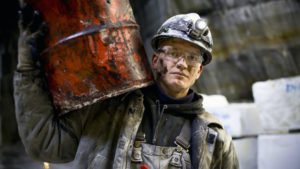East Coast gas shortages could get worse as energy companies cut spending further

Pic: Yuichiro Chino / Moment via Getty Images
Global energy companies are cutting spending in the face of low oil prices, and the ripple effect is that it’s likely to worsen gas shortages on Australia’s East Coast.
“With the collapse in the oil price and the oversupply, the majors around the world are cutting back capex by 25-30 per cent,” Blue Energy (ASX:BLU) boss John Phillips told Stockhead.
“That hits drilling campaigns. It will flow through to the LNG market and all these majors will start curtailing. But we have to be careful not to shoot ourselves in the foot because the [supply] gap is sooner rather than later.”
Gas prices are often linked to oil and Australia’s LNG in particular is sold via contracts linked to the JCC, or Japan Customs-cleared Crude.
As lower prices for oil begin to impact on the price East Coast majors such as Shell and Origin Energy (ASX:ORG) receive for their Queensland LNG, they are cutting back on further gas field development in the region.
Even before the COVID-19/OPEC-created oil price crash and subsequent oversupply began, Australian regulators were warning of shortages in the east.
In March the Australian Energy Market Opportunities (AEMO) released a report warning of a shortfall in 2023. This followed warnings from the Australian Competition and Consumer Commission (ACCC) in February.
We need a pipeline
Blue Energy is focused on Queensland’s Bowen Basin.
Today the company initiated a pre-feasibility study on potential for the development of gas generation capacity within its owned tenure.
Blue Energy is also pursuing gas buyers in the Townsville and Moranbah markets. It says more gas supply would assist these regions’ growth ambitions.
While economists have praised the Morrison government for its response, they believe it cannot stop now. General infrastructure spending has been a repeated recommendation.
Phillips believes gas infrastructure could be a part of this and would pay for itself over time.
“The Bowen Basin is up there ready to go with significant volume that can underpin domestic supply for 30 years,” he said.
“What holds us back, is that we need a 500km pipeline to be funded and sanctioned by the government.
“If they want infrastructure, this is an annuity.”
In an ASX announcement this morning, Blue Energy said such a pipeline could meet the projected shortfall. It could deliver 300 terajoules per day of gas to the domestic market.
Phillips also agreed with calls for microeconomic reform to help junior explorers.
“If you can incentivise people to get out there and look for gas beyond LNG players and get rid of green and red tape that stops them from getting out there, your conveyer belt of opportunities becomes that much greater,” he told Stockhead.
NOW READ: Competition watchdog says Australia needs more gas because prices are still to high
Related Topics

UNLOCK INSIGHTS
Discover the untold stories of emerging ASX stocks.
Daily news and expert analysis, it's free to subscribe.
By proceeding, you confirm you understand that we handle personal information in accordance with our Privacy Policy.








